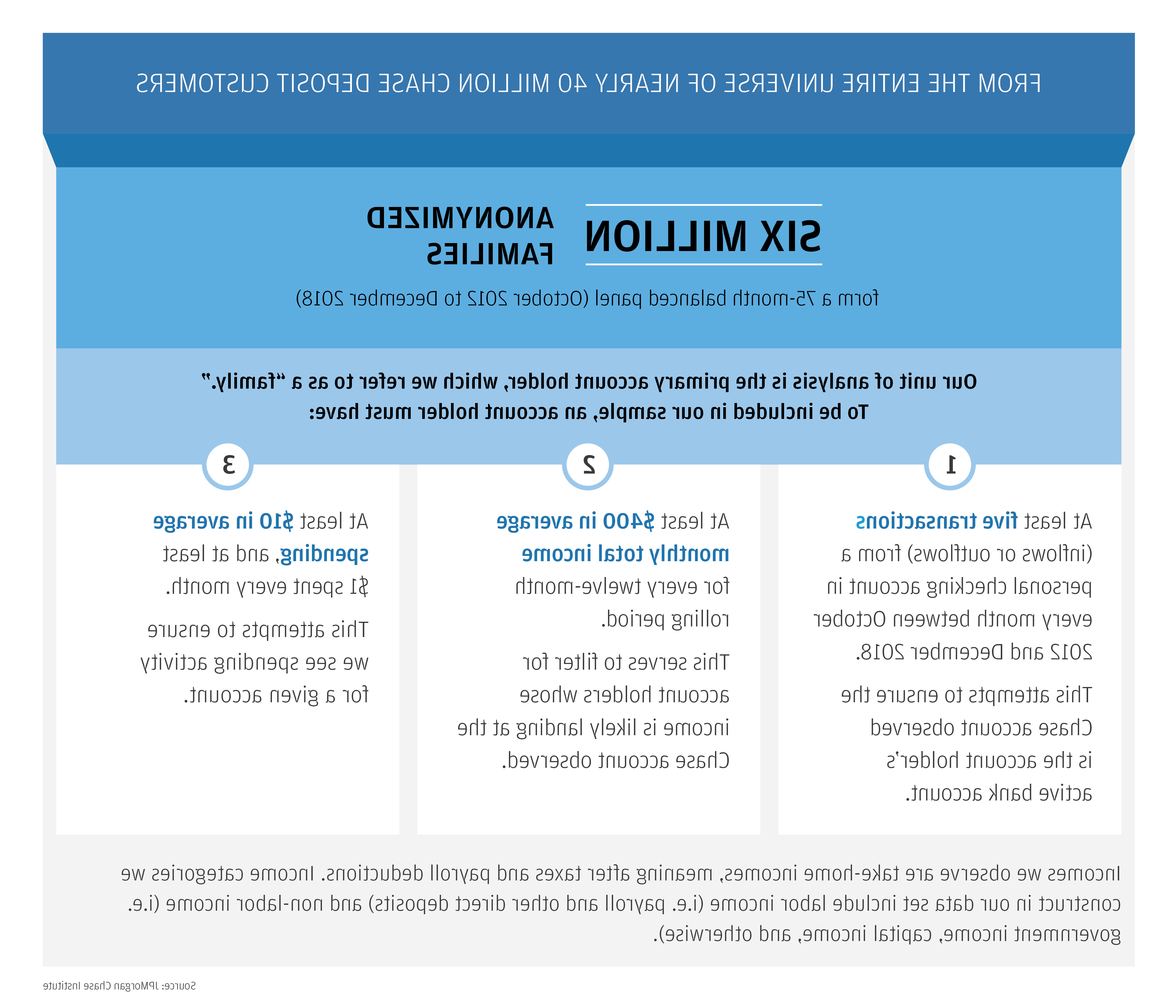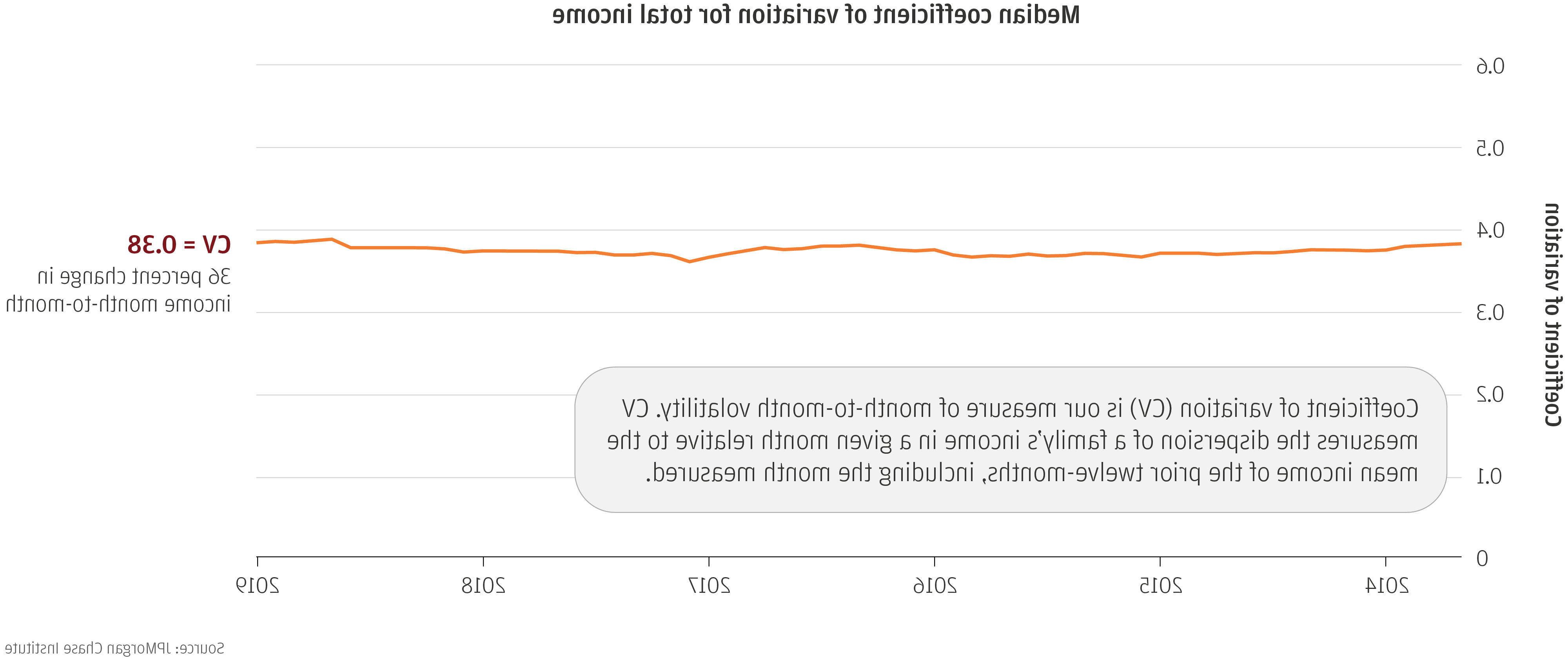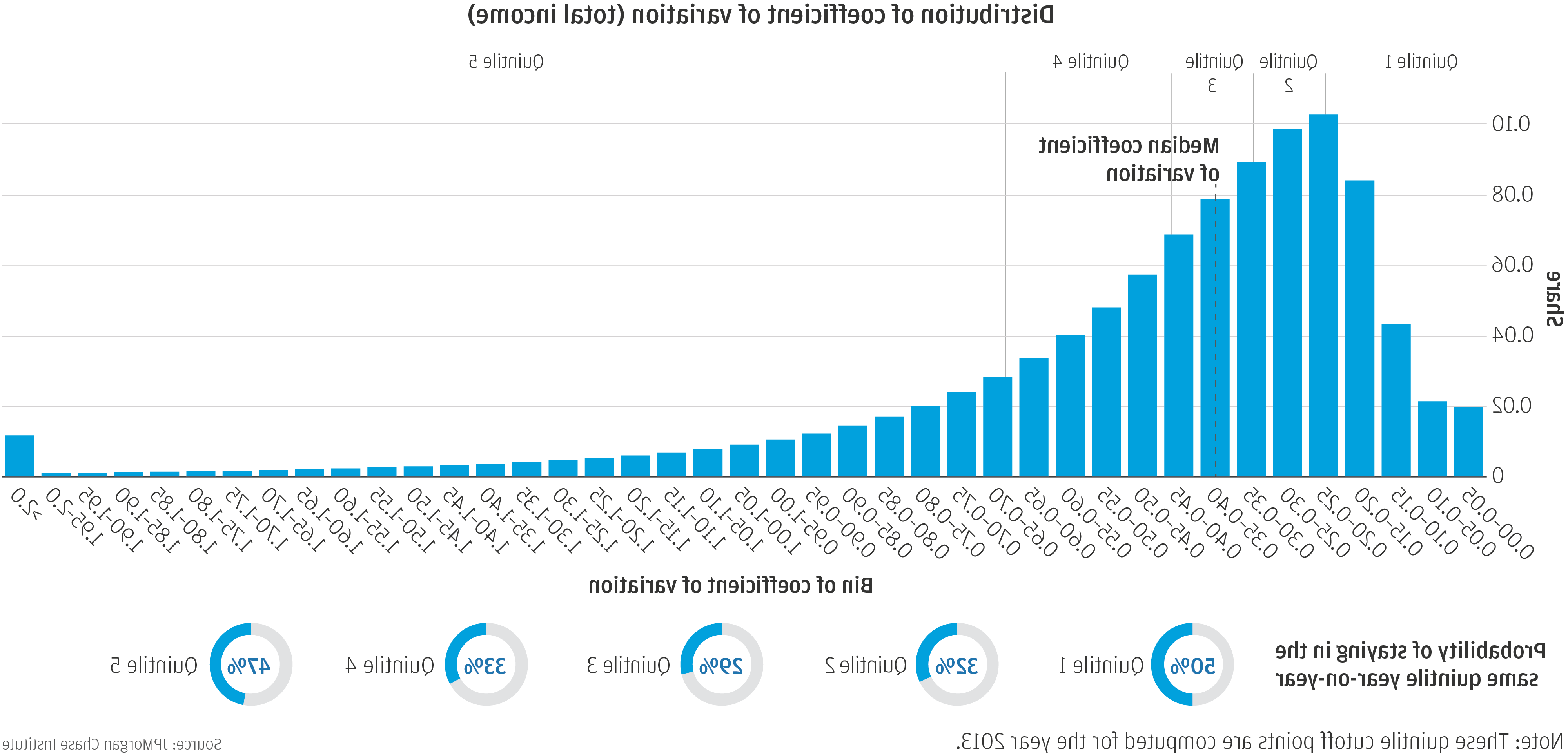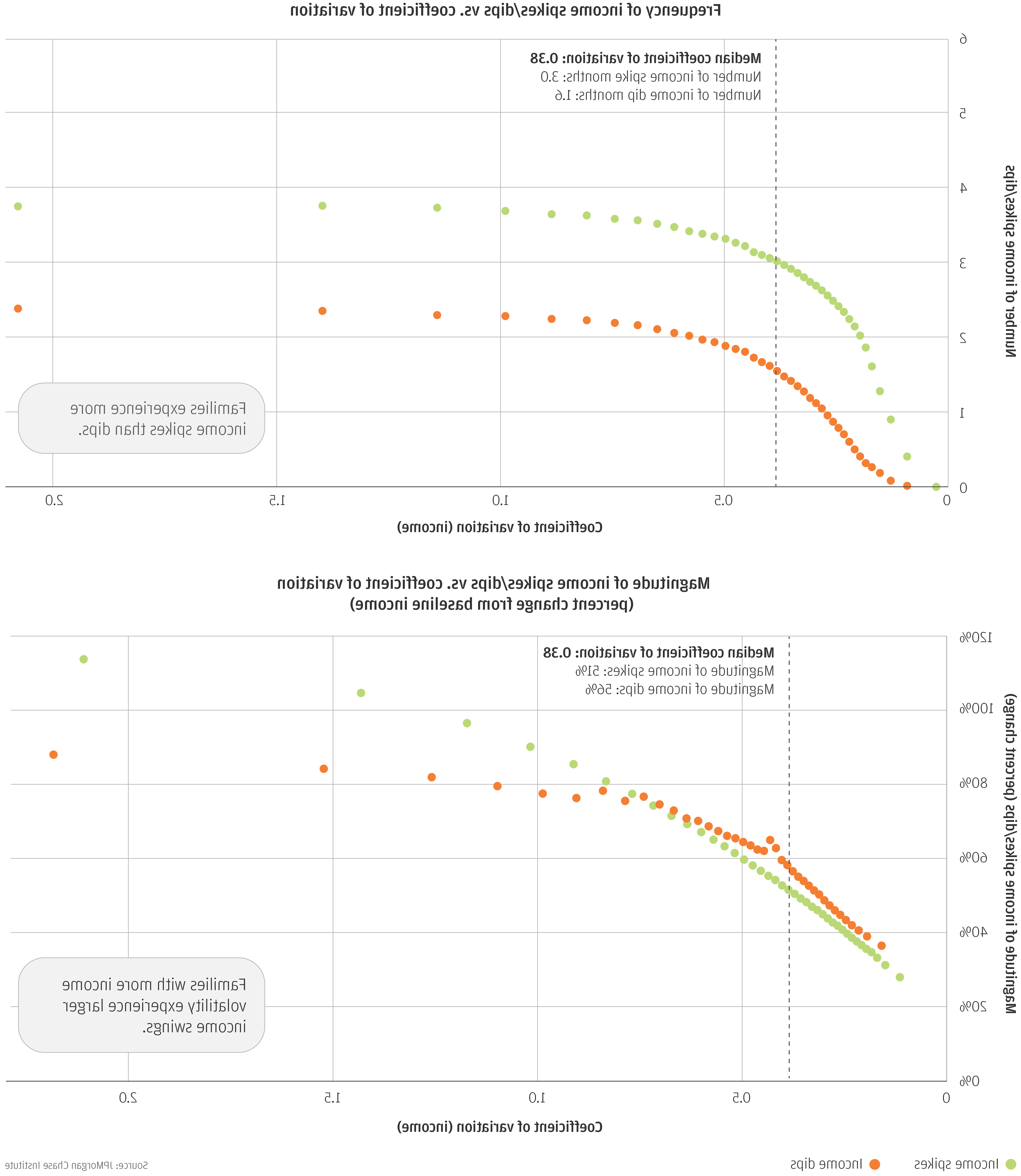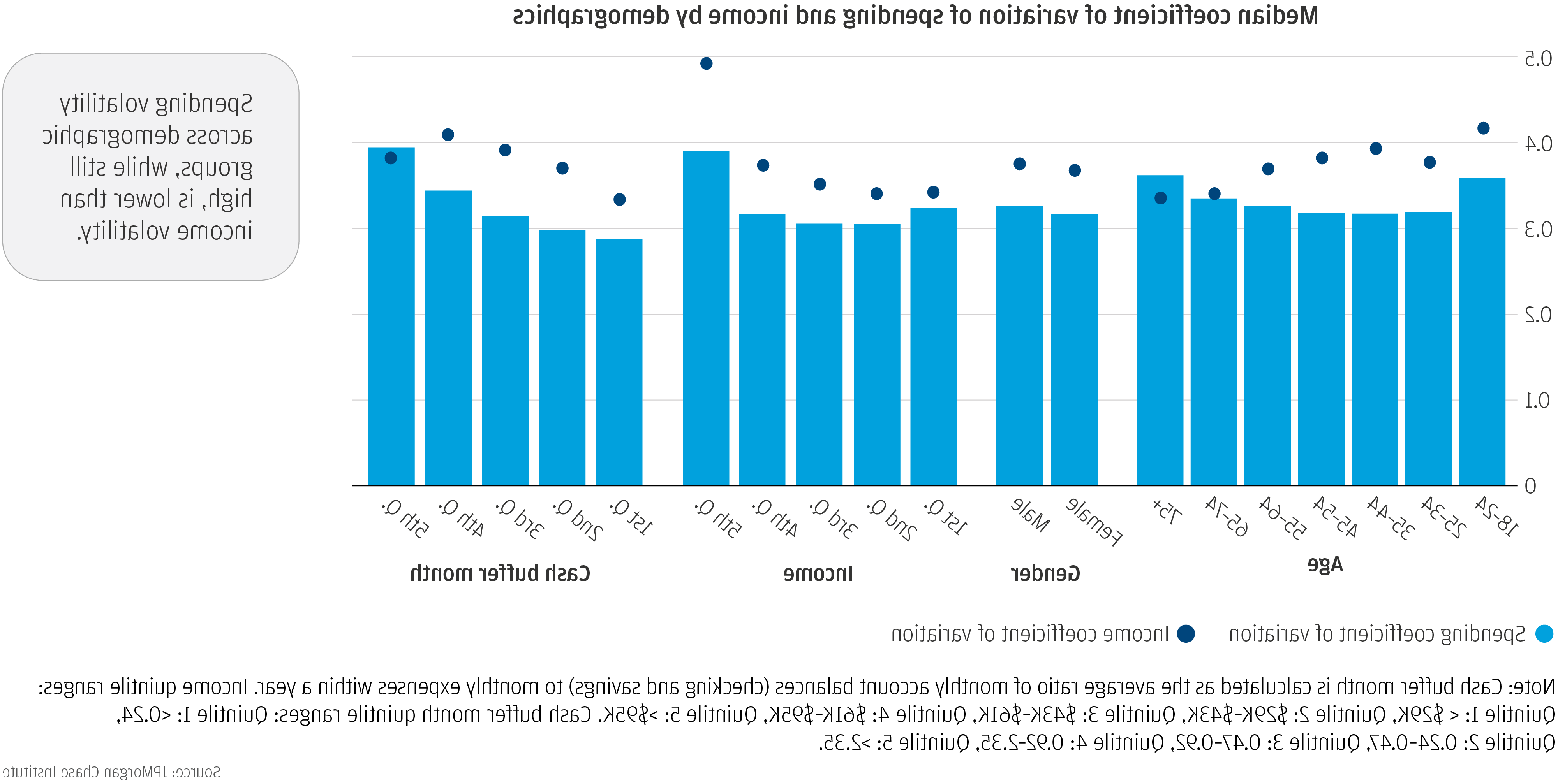请 更新浏览器.
发现
- 去找12013年至2018年期间,收入波动性保持相对稳定. 波动中值水平的股票, 平均, 在前一年,每个月的收入变化是36%.
- 去找2家庭经历的收入波动程度有很大差异, 既包括特定时间点的家庭也包括特定时间点的家庭.
- 去找3On average, families experience large income swings, in almost five months out of a year. 收入飙升的可能性是收入下降的两倍,在3月和12月最常见. Families with the most volatile incomes experience swings that are larger but not more frequent than families with less volatile incomes.
- 去找4年轻人和高收入人群的收入波动最大. 然而, 下行风险, 以收入下降的幅度和频率来衡量, 是低收入家庭中最大的吗.
- 去找52013年至2018年期间,支出波动趋势持平. 而支出波动的水平也很高, 这比收入波动率低15%, except among account holders over the age of 75 and those with the largest cash buffers.
- 去找6Families need roughly six weeks of take-home income in liquid assets to weather a simultaneous income dip and 支出飙升. 65%的家庭没有足够的现金缓冲来做到这一点.
下载
在这份报告中, the 澳博官方网站app 研究所 uses administrative bank account data to measure income and 支出 volatility and the minimum levels of cash buffer families need to weather adverse income and 支出 shocks.
Inconsistent or unpredictable swings in families’ income and expenses make it difficult to plan 支出, 偿还债务, 或者决定存多少钱. 管理这些波动, 或波动, is increasingly acknowledged as an important component of American families’ financial security. 在之前的澳博官方网站app研究所(JPMCI)研究中, we have documented the high levels of income and expense volatility families experience. 在这份报告中, we make further progress toward understanding how volatility affects families and what levels of cash buffer they need to weather adverse income and 支出 shocks. 我们探讨了六个关键问题:
- 2013年至2018年的逐月收入波动趋势如何?
- 收入波动的分布是怎样的?它是否每年都持续存在?
- 收入飙升与下降的普遍性和程度如何?
- 不同人口群体的收入波动有何不同?
- 与收入波动相比,每月支出波动如何, 总体和跨人口群体?
- What are the minimum levels of cash buffer that families need to weather adverse income and 支出 shocks?
发现三: On average, families experience large income swings, in almost five months out of a year. 收入飙升的可能性是收入下降的两倍,在3月和12月最常见. Families with the most volatile incomes experience swings that are larger but not more frequent than families with less volatile incomes.
发现五: 2013年至2018年期间,支出波动趋势持平. 而支出波动的水平也很高, 这比收入波动率低15%, except among account holders over the age of 75 and those with the largest cash buffers.
Our findings have important implications for designing savings strategies to improve families’ financial health and resilience. They suggest that the tools currently available to help families weather volatile income and 支出 could be better tailored to an individual’s cash flows. Simply saving a certain percentage of monthly income may leave a family with an inadequate cash buffer, exacerbating financial distress in cash flow negative months and resulting in under-saving during cash flow positive months. 而不是, families may need to more aggressively harvest savings opportunities during income spike months. 我们为家庭提供经验指导, 财务健康倡导者, 财务顾问, and policymakers on the minimum levels of cash buffer families need to weather adverse shocks. 鉴于稳定对家庭财务生活的健康起着关键作用, it is critical that we continue to gauge how income and 支出 volatility are changing for American families and the implications for families’ financial health.

